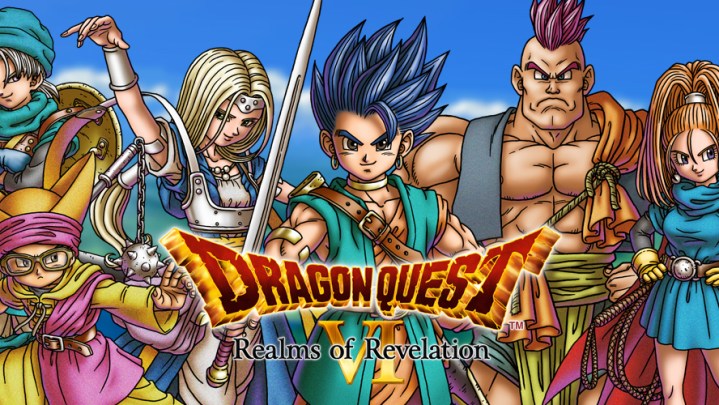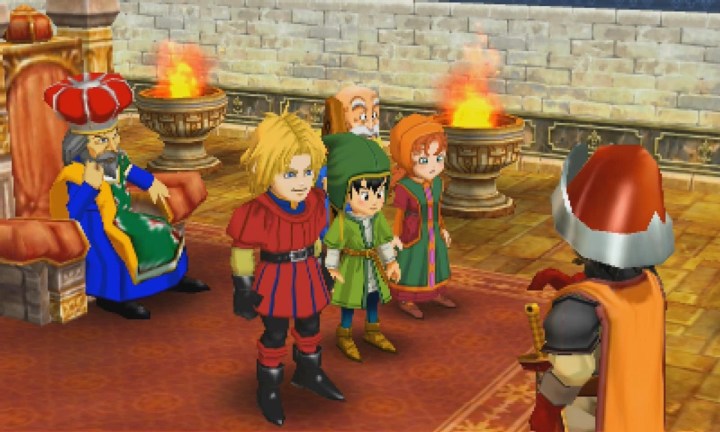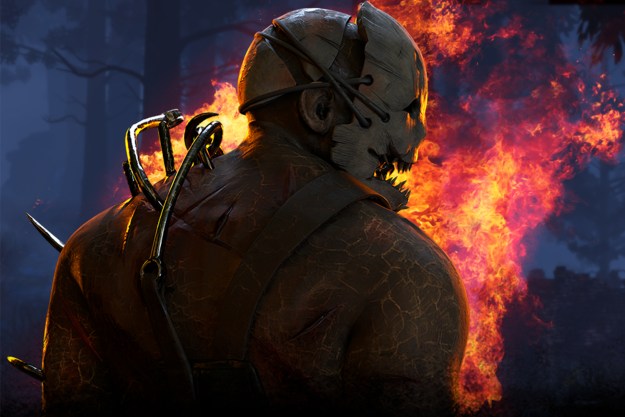Although Dragon Quest wasn’t the first Japanese RPG, it was the first one to popularize the tropes of the genre. It’s hard to understate the influence Dragon Quest has had over the decades, with many of its unique mechanics showing up in massive franchises like Pokémon and Final Fantasy. For a series so old, though, it’s hard knowing where to start. That’s why we decided to rank the best Dragon Quest games.
- 11. Dragon Quest X
- 10. Dragon Quest
- 9. Dragon Quest II: Luminaries of the Legendary Line
- 8. Dragon Quest III: The Seeds of Salvation
- 7. Dragon Quest VI: Realms of Revelation
- 6. Dragon Quest IV: Chapters of the Chosen
- 5. Dragon Quest VII: Fragments of the Forgotten Past
- 4. Dragon Quest IX: Sentinels of the Starry Skies
- 3. Dragon Quest V: Hand of the Heavenly Bride
- 2. Dragon Quest VIII: Journey of the Cursed King
- 1. Dragon Quest XI: Echoes of an Elusive Age
We’re covering all of the mainline titles in the series, but not any of the spin-offs. If you want to dive into Dragon Quest, you can technically start with any game in the series. There are two trilogies, but the connective tissue is thin, so you can play any game without losing out on much. For new players, we recommend starting with Dragon Quest XI. It’s the most recent game in the series, and it’s readily available on modern platforms.
Further reading
11. Dragon Quest X

Dragon Quest X isn’t a bad game, but it’s a bit of a dud when it comes to ranking all of the mainline titles. It’s the first and only MMO in the main series, released in Japan in 2012. For most of its life, Square Enix used an IP address ban system to keep the experience localized to Japan. Square Enix has since removed the ban, but Dragon Quest X still hasn’t been localized for other regions, and you can’t buy or download it outside of Japan.
With a VPN and a little technical know-how, you can play Dragon Quest X outside of Japan. However, there aren’t many English-speaking players, and you’ll miss most of the story beats unless you know Japanese or are good at translating references. That’s a shame, too, considering Dragon Quest X is one of the better mainline titles in the series.
10. Dragon Quest

Similar to Dragon Quest X, the original Dragon Quest just doesn’t stack up to modern offerings. As the archetype of the JRPG genre, Dragon Quest spent its slim runtime introducing basic mechanics and leaning into the tropes that would define the series (and the genre) moving forward. It’s like a history lesson: Dense with game design elements that still apply today, but bogged down by a dated story and barebones mechanics.
For series mega-fans, Dragon Quest is a great romp down memory lane, and a concise one with its uncharacteristically short runtime. Otherwise, it feels like an RPG released in 1986. Although Akira Toriyama’s art still shines through, the game is boring and bland by today’s standards.
9. Dragon Quest II: Luminaries of the Legendary Line

Most of the Dragon Quest games aren’t connected, but Dragon Quest II: Luminaries of the Legendary Line is a proper sequel to the first game. It was released only a year after the first title and featured few improvements. The game added a party system, allowing you to create a party of heroes you like, but for the most part, it’s just more Dragon Quest.
It’s not very fun to play, either. Luminaries of the Legendary Line taught Square Enix an important lesson in JRPG design. The original game is horribly unbalanced, with enemies getting more difficult faster than you can gain experience. That leads to a lot of mindless grinding and a lot of pointless battles, drawing out the worst JRPGs have to offer. An updated port on the Nintendo Switch brought some balance improvements, but Dragon Quest II remains one of the most uninteresting titles in the series.
8. Dragon Quest III: The Seeds of Salvation

Dragon Quest III: The Seeds of Salvation is a prequel to the first game, and it finishes out the Erdrick or Loto trilogy. Like the first two games, The Seeds of Salvation is dated. However, it introduced the class system to the series, allowing you to change up your playstyle with different characters, and it’s much more balanced than Dragon Quest II. If you want to see where Dragon Quest began, this is the game to start with.
Story-wise, Dragon Quest III would be a lot more interesting if the first two games had a little more meat. It sets up Erdrick and provides some extra context to the first two games. However, it’s still an NES-era RPG, so following the story is already difficult and even more so considering how bare the first two games are. Still, Dragon Quest III is easily the best out of the original trilogy.
7. Dragon Quest VI: Realms of Revelation

Dragon Quest VI: Realms of Revelation is a refinement point for the series. Rather than introducing a range of new concepts, the game offers minor adjustments to the mechanics seen in Dragon Quest IV and Dragon Quest V. It’s the last game in the Zenithian trilogy, and it includes the class system seen in Dragon Quest III. In addition to main classes, players can use hybrid classes by mastering combinations of the main classes (warrior and mage for the armamentalist class, for example).
The game didn’t make its way out of Japan until 2011, a full 16 years after the game launched on the Super Famicom. It released internationally on the Nintendo DS alongside the other games in the Zenithian trilogy, and much like those games, it felt like too little too late. Dragon Quest VI isn’t a bad game, but it’s not quite as impressive as it was in 1995.
6. Dragon Quest IV: Chapters of the Chosen

Dragon Quest IV: Chapters of the Chosen was a groundbreaking title when it released in 1990. It’s the first game in Zenithian trilogy, which Square Enix continued with Dragon Quest V and Dragon Quest VI. The game ditches the linear narrative of the first three titles in favor of a chapter-based story, where each of the main characters gets their own chapter and backstory. The game also introduced A.I.-controlled party members with the tactics system, a series of mini-games through the casino, and quality-of-life improvements like fast travel.
The problem is that all of these systems are antiqued by today’s standards. Dragon Quest IV is a great RPG, but it was still released on the NES, and it still has all of the limitations of games from that era. Square Enix released a remake of the game on Nintendo DS — alongside the other games from the Zenithian trilogy — so you can still play the game without too many issues.
5. Dragon Quest VII: Fragments of the Forgotten Past

Dragon Quest VII: Fragments of the Forgotten Past was the right game at the wrong time. It came out on the original PlayStation after the release of the PS2, which hindered its reach, particularly in the West. It’s still one of the better games in the series, though. It includes a similar monster-catching system to Dragon Quest V, and it has one of the deepest class systems in the series. There are several classes with different tiers for your party members, and there are even classes for monsters.
Still, Dragon Quest VII isn’t for the faint of heart. It is notoriously the longest and most difficult game in the series. A playthrough can take you over 100 hours, even ignoring most side quests. Because of that, the game adopts a slow pace that asks players to settle in for hours at a time, grinding and running around the world to get to the next story beat. For Dragon Quest fans, Fragments of the Forgotten Past is one of the best games in the series. For newcomers, it’s best to start with another game.
4. Dragon Quest IX: Sentinels of the Starry Skies

Dragon Quest IX: Sentinels of the Starry Skies followed the smash hit that was Dragon Quest VIII, so it had a lot to live up to. Like the PS2 game before it, Dragon Quest IX was developed by Level-5, but it was designed exclusively for the Nintendo DS and emphasized co-op play through Nintendo’s local Wi-Fi connection. It also added several features to the series, including an in-game achievement list for completing side quests and recipes for crafting weapons, armor, and items.
Although Dragon Quest IX didn’t reach the same audience as its predecessor, it’s still a landmark title in the series. It was the first Dragon Quest game to receive a perfect score from Japanese magazine Famitsu — the 10th game to receive a perfect score, and one of only 27 games to ever receive a perfect score. Although the online elements are a big part of the game, you can play through Dragon Quest IX by yourself.
3. Dragon Quest V: Hand of the Heavenly Bride

Dragon Quest V: Hand of the Heavenly Bride is the ultimate Dragon Quest experience. It was the first mainline game with a Pokémon-like monster-capturing system, which would show up again in Dragon Quest VI, Dragon Quest VIII, and Dragon Quest X and even spawn its own spin-off series. It’s surprisingly robust for a game released in 1992, with the story taking place over the course of several years and featuring life sim mechanics like marriage and even the ability to have kids.
It was also the first game to feature a bonus dungeon, starting a trend of endgame content that the series would use going forward. Dragon Quest V is an inflection point in the series, marking a shift away from basic RPG tropes into more interesting gameplay mechanics and narratives. It’s the second game in the Zenithia trilogy, but you can still enjoy it even if you haven’t played Dragon Quest IV or Dragon Quest VI.
2. Dragon Quest VIII: Journey of the Cursed King

Dragon Quest VIII: Journey of the Cursed King and our next pick are both excellent games, and if we could give them both first place, we would. Dragon Quest VIII takes a backseat simply because it’s older and not available on modern platforms, but that doesn’t mean it’s a worse game. The first fully 3D Dragon Quest game, Journey of the Cursed King pushed the series into the limelight in the West. A bundled demo of Final Fantasy XII helped boost sales on the PlayStation 2 title and established Dragon Quest in the U.S.
It comes from legendary developer Level-5, who also worked on Ni No Kuni: Wrath of the White Witch. For gameplay, it’s the typical Dragon Quest experience. That said, Level-5 added the Tension system that has since become a series staple and a secondary skill tree for different playstyles. Like previous games, though, this one comes down to the story, characters, and sense of grand adventure.
1. Dragon Quest XI: Echoes of an Elusive Age

Dragon Quest XI: Echoes of an Elusive Age managed to modernize one of the oldest names in video games without losing what made the series special. It’s a bog-standard JRPG: You fight turn-based battles, run around semi-open areas looking for loot, and bounce between towns hitting story beats and stocking up on your inventory. Even with that, Dragon Quest XI feels special. A rich cast of characters and streamlined systems make it the definitive Dragon Quest experience. If you want to get into the series, this is the game you should play.
It’s even better now, too. Dragon Quest XI S: Echoes of an Elusive Age Definitive Edition — we don’t make the names — comes with a fully orchestrated soundtrack, an option to play the entire game with 16-bit graphics, Japanese voice acting, and extra scenarios for characters.
Dragon Quest XI drives at the heart of what makes JRPGs fun, removing needlessly complex systems and gameplay mechanics to create a modernized experience that lets the story and characters shine.
Read our Dragon Quest XI: Echoes of an Elusive Age review
Editors' Recommendations
- 9 best processors for PC gaming: tested and reviewed
- The best games on Netflix Games
- Square Enix just set a new bar for video game demos with its latest RPG
- Best gaming PC deals: Lenovo Legion, ASUS ROG, Acer Predator
- The best games on Xbox Game Pass for right now (April 2024)




